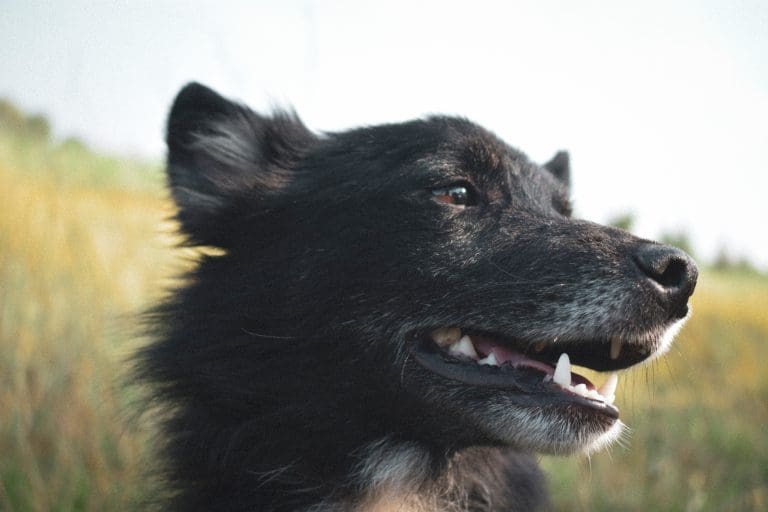How To Clean A Dog Wound?
Post Date:
December 10, 2024
(Date Last Modified: November 13, 2025)
Caring for a dog’s wound involves immediate assessment and careful steps to reduce pain and prevent infection while arranging veterinary care when necessary.
1. Assess wound severity and dog condition
Begin by determining whether the injury can be managed at home or requires immediate veterinary attention by noting the wound type and the animal’s overall condition.
| Wound type | Typical signs | Immediate priority |
|---|---|---|
| Abrasion | Shallow skin loss, raw surface | Clean to remove dirt and cover |
| Laceration | Jagged or clean cuts, may bleed | Control bleeding and assess depth |
| Puncture | Small entry, deep track | Do not probe deeply; risk of retained debris |
| Bite | Crushing injury, multiple punctures | High infection risk; consider vet care |
Look for signs that indicate systemic risk: pale or very red gums, collapse, very rapid breathing, or severe lethargy, as these suggest a need for urgent medical evaluation and stabilization.
2. Gather supplies and set up a clean workspace
Collect sterile or very clean items before handling the wound; a calm, well-lit workspace on a nonporous surface reduces contamination and makes each step faster and safer.
- Sterile saline or wound irrigation solution, sterile gauze pads, disposable gloves
- Diluted antiseptic (see section on antiseptics), blunt scissors, sterile tweezers
- Towels or absorbent pads, a secure muzzle or restraint tool, a clean container for debris
Keep supplies within reach so the procedure is continuous and the dog is handled as briefly as possible to limit stress and further injury.
3. Safely restrain and comfort the dog
Proper, gentle restraint protects caregivers and reduces the dog’s stress, which improves cooperation during cleaning and dressing placement.
Use a lightweight muzzle, a towel “swaddle,” or have an experienced helper hold the dog calmly and securely while you work; never force a struggling animal into a tight hold because increased agitation can cause injury to dog or handler.
4. Control bleeding and stabilize the wound
Stop active bleeding before attempting a detailed clean so that you can visualize the injury and reduce blood loss.
Apply steady, direct pressure with sterile gauze over the wound for 5–10 minutes to allow clot formation and reduce bleeding [1].
If a limb is involved, elevation or a pressure bandage can help control bleeding, and if bleeding continues or the loss appears heavy or arterial in nature (bright red, spurting), seek emergency veterinary care without delay [2].
5. Expose and prepare the wound for cleaning
Expose the wound by gently moving hair away; if needed, carefully trim surrounding hair with blunt scissors or clippers while avoiding cutting the skin to improve visibility and allow effective irrigation.
Blot—don’t rub—fresh blood with sterile gauze until you can clearly see the wound margins, and put on gloves to maintain as sterile a field as practical when handling dressings or instruments.
6. Irrigate and gently clean the wound
Thorough irrigation removes dirt and bacteria without causing further tissue injury; avoid harsh scrubbing that damages healthy tissue and slows healing.
Use copious sterile saline or clean potable water and flush from the cleanest side toward the dirtier side; begin with at least 1 cup (240 mL) of irrigation fluid for an initial flush on small to moderate wounds to dilute contaminants and debris [3].
Avoid repeated use of undiluted hydrogen peroxide or isopropyl alcohol for wound irrigation because they can damage healing tissue and delay recovery.
7. Remove debris and assess for foreign bodies
After irrigation, gently pick out visible dirt, grass, or grit with sterile tweezers; only remove superficial material that is readily accessible and not embedded deeply.
Do not attempt to probe for or extract deeply embedded foreign objects or objects close to bone or vital structures—document their presence and photograph the wound for the veterinary team and transport the dog for professional removal if needed.
8. Apply appropriate antiseptic and local care
Choose antiseptics that reduce bacterial load while minimizing tissue toxicity; follow dilution and contact-time guidance rather than applying concentrated products directly to the wound.
Use a diluted chlorhexidine solution at approximately 0.05% concentration when applying an antiseptic to open wounds and then rinse with saline, as lower concentrations balance antimicrobial activity and tissue safety [4].
Avoid repeated irrigation with hydrogen peroxide or alcohol and avoid topical human medications (such as over-the-counter antibiotic creams intended for people) unless a veterinarian has recommended them.
9. Dress and bandage the wound correctly
Protected wounds heal better; place a nonadherent primary dressing over the cleaned wound, add sterile absorbent gauze, and secure with a cohesive wrap that is snug but not tight to avoid impairing circulation.
Inspect toes or distal tissues for swelling, coolness, or color change after bandaging, and change dressings daily—every 24 hours—or sooner if they become wet or soiled to lower infection risk and allow wound reassessment [5].
10. Aftercare, pain control, and when to seek follow-up
Limit activity and prevent the dog from licking or chewing the wound with an e‑collar or other protective device until healing has progressed; persistent licking increases infection and delays closure.
Give analgesics, anti-inflammatories, or antibiotics only under veterinary prescription, and seek reassessment if there is increasing redness, swelling, foul odor, new discharge, fever, or any decline in the dog’s behavior or appetite.
Seek urgent veterinary attention for any wound with exposed bone, very deep tissue involvement, suspected joint penetration, evidence of retained foreign material, arterial bleeding, or systemic signs such as collapse or very rapid breathing [2].
Continue wound care with an understanding of healing stages, closure decisions, infection prevention, and scheduled follow-up to support safe recovery.
Wound healing stages and expected timeframes
Healing proceeds through predictable phases: hemostasis, inflammation, proliferation, and remodeling, each with characteristic timing that guides monitoring and interventions.
Hemostasis starts immediately at the time of injury and commonly completes within 24–48 hours as initial clotting and vascular responses occur [1].
The inflammatory phase typically peaks within 1–3 days and is marked by redness, heat, and swelling as immune cells clear debris [1].
Tissue proliferation with granulation and epithelialization usually spans about 3–14 days for many superficial wounds, depending on size and contamination level [1].
Remodeling of collagen can continue for months, often 6–12 months for deeper injuries, and functional recovery should be expected to improve slowly over that interval [1].
Deciding on closure: suture timing and criteria
When evaluating whether a wound should be closed immediately, consider wound age, contamination, location, and tissue loss; many clean wounds are ideal for closure within a specific window to reduce infection risk.
Surgical closure is commonly performed when a wound is less than about 6–8 hours old and relatively clean, though facial wounds may tolerate longer delays before closure due to better blood supply [3].
Wounds with heavy contamination, puncture tracts, or crushing injury are more often managed by delayed closure or healing by second intention because immediate suturing can trap bacteria and increase infection risk [3].
If sutures are placed, many skin sutures on limbs and body are removed at about 10–14 days post‑operation, and facial sutures are commonly removed earlier, around 5–7 days; final timing depends on location and tissue tension [3].
Antibiotics, tetanus, and infectious risks
Antibiotics are not required for every superficial wound but are indicated for bite wounds, heavily contaminated injuries, puncture wounds, and cases with systemic signs or high infection risk; veterinarians choose agents based on likely organisms and patient factors [2].
Bite wounds have a particularly high infection risk because oral bacteria are introduced; prophylactic or therapeutic antibiotics are commonly recommended for many confirmed bite wounds to reduce septic complications [2].
Tetanus is rare in dogs compared with horses and humans, but concerns about rabies or other zoonoses after wild animal bites should prompt immediate contact with veterinary services and local public‑health authorities for testing or post‑exposure steps when wildlife are involved [2].
Monitoring the wound and scheduled rechecks
Early re-evaluation helps detect infection or dehiscence; inspect the wound and bandage daily and arrange a veterinary recheck if progress is not apparent within the first few days.
Many practices recommend a formal recheck at about 48–72 hours after initial treatment to confirm declining inflammation, effective drainage, and intact dressings or to adjust therapy if infection signs appear [5].
Watch for red flags that require prompt reassessment: increasing redness or swelling, new or worsening foul odor or purulent discharge, persistent bleeding, fever, or worsening lethargy or appetite changes, any of which warrant veterinary evaluation [2].
Bandage and e‑collar care: timelines and practical tips
Keep dressings dry and clean; change primary and secondary dressings at least every 24 hours or sooner if damp, soiled, or slipping, because moisture and contamination accelerate bacterial growth [5].
Use an e‑collar or other protective device until sutures are removed or the wound has epithelialized; typical collar duration often matches suture removal timing of about 10–14 days or until the veterinary team advises otherwise [3].
Monitor distal circulation when limbs are bandaged: check toes or paw pads for normal color and warmth several times per day, and loosen a bandage promptly if the toes become pale, cool, or swollen to avoid ischemic injury [5].
Special scenarios: punctures, joint involvement, and bites
Puncture wounds and wounds near joints or bones carry a higher risk of deep infection and often require professional assessment, imaging, or surgical exploration; because they can appear small externally but extend deeply, do not probe these at home [3].
Bite wounds, especially from other animals, frequently need systemic antibiotics and sometimes hospitalization for intravenous therapy if systemic signs are present; hospitalization becomes more likely when a patient shows fever, marked lethargy, or evidence of sepsis [2].
When to go immediately to emergency care
Some findings should prompt immediate transport to an emergency clinic: heavy ongoing bleeding, arterial spurting, exposed bone, uncontrollable pain, collapse, or respiratory distress; these signs suggest life‑threatening problems requiring urgent stabilization [2].
Similarly, any wound that likely involves a joint, tendon, or foreign body that cannot be removed safely on site should be evaluated emergently because delayed treatment increases the chance of long‑term dysfunction or deep infection [3].
Safe analgesia and avoiding harmful home remedies
Never give human pain medications such as acetaminophen or ibuprofen without direct veterinary instruction; many human analgesics are unsafe for dogs and can cause severe toxicity [2].
If pain relief is needed, obtain veterinary guidance for an appropriate analgesic plan and follow dosing instructions precisely; inappropriate dosing or unapproved drugs can worsen outcomes [2].
Record keeping and communication with your veterinarian
Document the wound with dated photographs and notes on when and how the injury occurred, any foreign material removed, and the timing of cleaning and dressing changes; providing clear records helps the veterinarian assess progression and tailor follow‑up care.
Bring a concise history of vaccinations, previous health problems, current medications, and any changes in behavior or appetite to follow‑up visits, as these factors influence treatment decisions, antibiotic choices, and prognosis [2].






